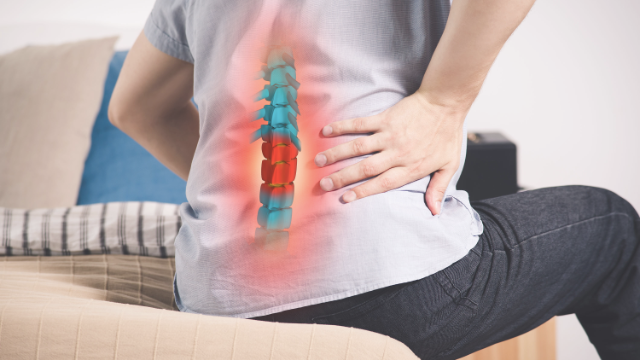Most Back Pain Can Be Treated By A Physical Therapist

Low back pain is incredibly common. Nearly one–half of all working Americans notice painful symptoms in the lower back at least once each year, and roughly 31 million individuals are affected by it at any given point in time. Thus, low back pain is essentially just a part of life and something that most of us will eventually encounter, like it or not.
Dealing with low back pain can be troublesome and place a strain on everyday life. Typical movements like bending over to pick something up off the ground or twisting your torso when looking to the side might suddenly give you pause and make you less mobile. Being regularly bothered by pain and movement limitations will often lead one to wonder what’s causing the pain and what steps can be taken next to address it.
The truth is that the specific cause of low back pain is usually difficult to pinpoint, and regardless of its cause, the most effective treatment is almost always a comprehensive and individualized physical therapy treatment program. Nonetheless, although rare, there are a few signs that may be “red flags” and warrant further investigation. To help you better understand what could be causing your back pain and what to do next, below are the 6 most common low back pain conditions seen by physical therapists and some red flags to be aware of:
The 6 most common low back pain conditions treated by physical therapists
- Sprain: occurs when a ligament in the spine is pushed beyond its limits, which can damaged or tear it; typically leads to pain, discomfort, reduced range of motion, and possibly muscle cramping or spasms
- Strain: involves a tendon or muscle that supports the spine being twisted, pulled, or torn; as with sprains, strains in the lower back usually lead to pain, discomfort, reduced range of motion, and possibly muscle cramping or spasms
- Sprains and strains are responsible for most cases of back pain, particularly in younger patients; these injuries can occur either from a single incident or result from repetitive stress over time
- Herniated disc: a condition in which the softer jelly–like substance of a disc in the spine pushes out through a crack in the tough exterior ring; a “bulging disc” means that the inner layer has protruded outwards, but the outer layer remains intact; common symptoms include arm or leg pain, numbness or tingling, and weakness
- Spinal stenosis: a condition in which the spinal canal–the space around the spinal cord filled with a fluid that bathes the nerves and nerve roots of the spine–narrows over time, which puts pressure on the spinal cord and spinal nerve roots; spinal stenosis is typically only seen in older adults
- Degenerative disc disease: an age–related disorder in which one or more of the intervertebral discs deteriorates or breaks down, which can lead to a herniated disc or other related issues; degenerative disc disease is another one of the most common causes of low back pain
- Osteoarthritis: involves the breakdown of protective cartilage that surrounds the ends of joints and discs in the spine; osteoarthritis can occur anywhere in the spine, and has been referred to as the most common cause of low back pain in patients over the age of 50; patients typically experience pain and stiffness, while weakness or numbness may also occur for some


